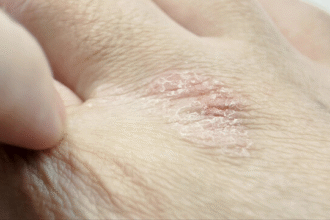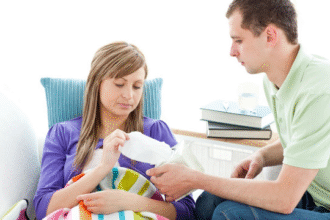Transmission Routes of Infectious Diseases
Pathogens leave an infectious source and reach susceptible hosts through defined pathways called transmission routes. A single pathogen may use multiple routes depending on context (e.g., influenza: droplets + contact; SARS-CoV-2: droplets, short‑range aerosols, fomites). Understanding routes underpins targeted control measures (vaccination, ventilation, vector control, sanitation, PPE).
- Core Concepts
- Major Transmission Routes
- 1. Respiratory (Droplet & Aerosol)
- 2. Direct & Indirect Contact
- 3. Blood and Body Fluid (Parenteral)
- 4. Fecal–Oral (Gastrointestinal / Vehicle)
- 5. Vector-Borne
- 6. Vertical (Mother-to-Child)
- 7. Healthcare-Associated (Nosocomial)
- Mixed / Multiple Routes
- Summary Table (Abbreviated)
- Breaking Transmission — Layered Interventions
- Practical Application Example (Respiratory Outbreak)
- Key Takeaways
Core Concepts
- Infectious source: person, animal, environment shedding the pathogen.
- Portal of exit / portal of entry: anatomical sites where pathogen leaves/enters.
- Transmission route: mechanism/pathway linking source to new host.
- Vehicle or vector: intermediary (water, food, blood product, insect) facilitating spread.
- Infectious period: time during which a source can transmit (varies by pathogen and influences control strategies).
Major Transmission Routes
1. Respiratory (Droplet & Aerosol)
Inhalation of pathogen-laden particles expelled by coughing, sneezing, talking, breathing, or medical procedures. Droplets (larger, short range) and aerosols (smaller, can remain suspended) form a continuum.
Examples: measles (airborne, highly contagious), varicella, influenza, RSV, tuberculosis (airborne nuclei), SARS, COVID-19.
Controls: vaccination (measles, influenza), isolation (airborne / droplet precautions), ventilation and filtration, masking, cough etiquette.
2. Direct & Indirect Contact
Direct physical contact (skin/mucosa) or indirect via contaminated surfaces, soil, or water. Includes sexual contact (a subset with mucosal exposure) and percutaneous inoculation through contaminated objects.
Examples: impetigo, HSV (direct); tetanus (soil-contaminated wound); schistosomiasis (water exposure to cercariae); hookworm (skin penetration); sexually transmitted infections (HIV, HBV, HCV, syphilis, gonorrhea, chlamydia, HPV).
Controls: hand hygiene, safe sexual practices (condoms, limiting partners), protective footwear, wound care, sanitation, surface disinfection.
3. Blood and Body Fluid (Parenteral)
Transmission via transfusion, needlesticks, shared injection equipment, organ transplantation, or exposure to contaminated invasive devices; sexual and perinatal overlap for some agents.
Examples: HIV, HBV, HCV, HTLV, Ebola (also contact), emerging hemorrhagic fevers.
Controls: blood screening, single-use needles/syringes, safe injection programs, standard precautions, PPE, post-exposure prophylaxis (HIV, HBV), vaccination (HBV).
4. Fecal–Oral (Gastrointestinal / Vehicle)
Ingestion of pathogens from contaminated food, water, hands, or utensils.
Examples: cholera (Vibrio cholerae), typhoid fever, Shigella, norovirus, rotavirus, hepatitis A/E, enterotoxigenic E. coli, Giardia.
Controls: water treatment, sewage disposal, food safety (cook, separate, chill, clean), handwashing, safe shellfish harvesting, vaccination (typhoid, hepatitis A, cholera in high-risk settings).
5. Vector-Borne
Biological vectors (blood-feeding arthropods) acquire pathogens from an infected host and transmit them while feeding on another.
Examples: malaria (Anopheles mosquitoes), dengue/Zika/chikungunya/yellow fever (Aedes), Lyme disease (Ixodes ticks), plague (fleas), louse-borne typhus (Pediculus humanus), scrub typhus (chiggers), leishmaniasis (sandflies).
Controls: vector control (insecticide-treated nets, indoor residual spraying, environmental management), repellents (DEET, picaridin), protective clothing, vaccines where available (yellow fever, dengue in selected populations, malaria vaccines in rollout).
6. Vertical (Mother-to-Child)
Transmission before birth (transplacental), during delivery (exposure to blood and secretions), or after birth (breast milk or close contact).
Examples: HIV, HBV, syphilis, CMV, Zika virus, rubella, toxoplasmosis, hepatitis C (less frequent), HSV (intrapartum), group B Streptococcus.
Controls: antenatal screening (HIV, syphilis, HBV, GBS), maternal ART (HIV), antiviral prophylaxis/immune globulin (HBV), timely vaccination of infant (HBV birth dose), safe obstetric practices, avoidance of high-risk exposures, targeted Cesarean for certain conditions, counseling on breastfeeding risks in specific infections.
7. Healthcare-Associated (Nosocomial)
Infections acquired in healthcare settings via invasive procedures, contaminated devices, inadequate hand hygiene, or environmental reservoirs.
Examples: catheter-associated bloodstream infections, ventilator-associated pneumonia, Clostridioides difficile (fecal–oral), MRSA (contact), surgical site infections, hepatitis B/C via unsafe injections.
Controls: hand hygiene compliance, device bundles, sterilization and high-level disinfection, antimicrobial stewardship, environmental cleaning, surveillance, isolation precautions.
Mixed / Multiple Routes
Some pathogens exploit several routes (e.g., Ebola: contact with body fluids + possible short-range droplets; SARS-CoV-2: droplets, aerosols, fomites). Outbreak control requires addressing all plausible pathways.
Summary Table (Abbreviated)
| Route | Typical Agents | Key Controls |
|——-|—————-|————–|
| Respiratory | Measles, TB, Influenza | Vaccination, ventilation, masking |
| Contact (incl. sexual) | HSV, Syphilis, HIV, HPV | Barrier protection, hygiene |
| Blood/Parenteral | HBV, HCV, HIV | Screening, single-use devices, PEP, vaccination |
| Fecal–Oral | Cholera, Norovirus, Shigella | Water/sanitation, handwashing, food safety |
| Vector-Borne | Malaria, Dengue, Lyme | Vector control, repellents, nets, vaccines |
| Vertical | HIV, HBV, Syphilis | Maternal screening, ART, HBV immunoprophylaxis |
| Healthcare-Associated | MRSA, C. difficile | Hand hygiene, device bundles, cleaning |
Breaking Transmission — Layered Interventions
- Source control: treat or isolate infectious cases, vaccination, decolonization where appropriate.
- Interrupt route: engineering controls (ventilation), safe water, vector control, barrier precautions.
- Protect susceptible host: immunization, prophylaxis, PPE, host optimization (nutrition, chronic disease management).
- Surveillance & response: early detection, reporting, contact tracing, outbreak analytics.
Practical Application Example (Respiratory Outbreak)
- Identify pathogen (diagnostics, sequencing).
- Characterize transmission (attack rates by exposure setting).
- Implement layered controls (vaccination/boosters, ventilation upgrades, masking in high-risk settings, stay‑home when ill).
- Monitor for secondary spread; adapt measures based on reproduction number and severity metrics.
Key Takeaways
- Many pathogens have multiple potential routes; control plans must be comprehensive.
- Vaccination and WASH (water, sanitation, hygiene) remain among the most cost‑effective interventions.
- Rapid recognition of vertical and healthcare-associated transmission enables targeted prevention and reduces long-term burden.
Educational information only; consult public health guidelines and infection control specialists for outbreak management decisions.







